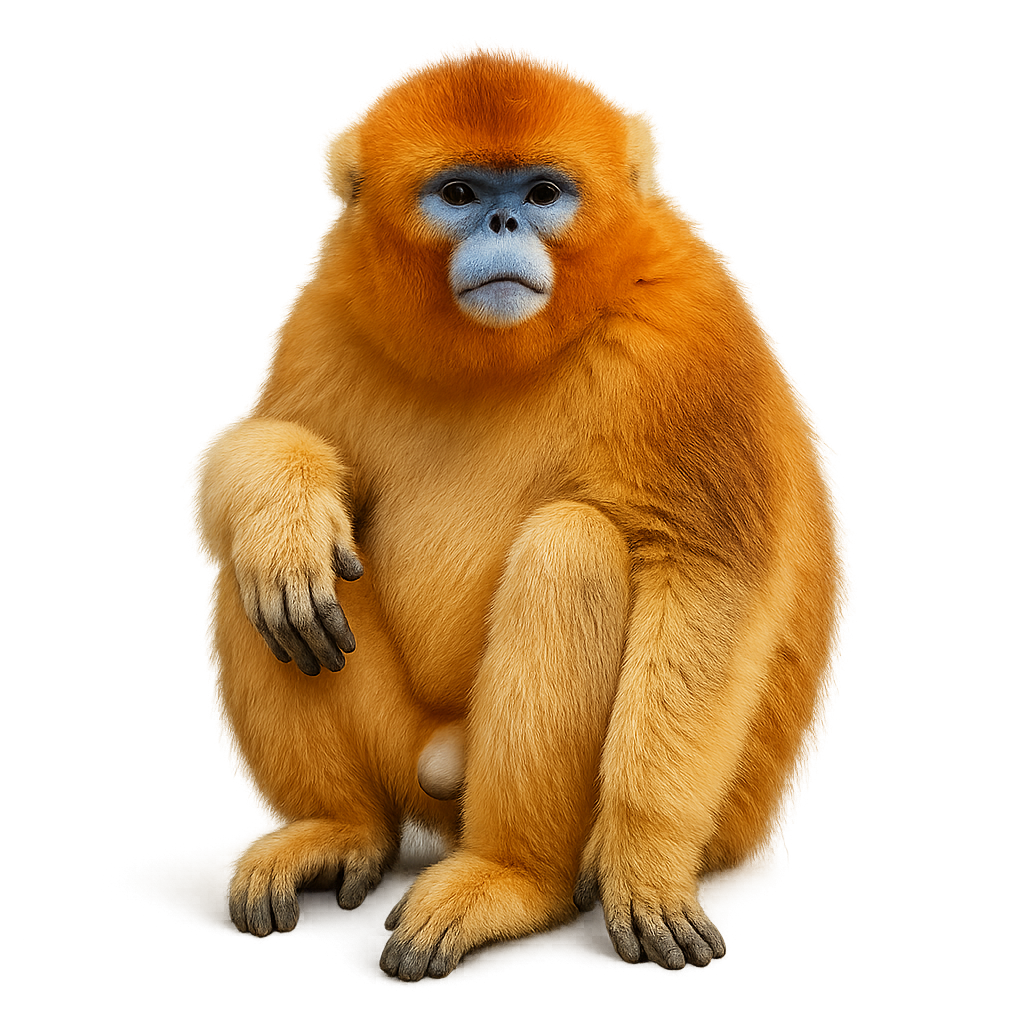Your wildlife photography guide.
Explore the golden snub-nosed monkey in detail, study its behavior, prepare your shots.
Where to observe and photograph the golden snub-nosed monkey in the wild
Learn where and when to spot the golden snub-nosed monkey in the wild, how to identify the species based on distinctive features, and what natural environments it inhabits. The WildlifePhotographer app offers tailored photography tips that reflect the golden snub-nosed monkey’s behavior, helping you capture better wildlife images. Explore the full species profile for key information including description, habitat, active periods, and approach techniques.
Golden snub-nosed monkey
Scientific name: Rhinopithecus roxellana

IUCN Status: Endangered
Family: CERCOPITHECIDAE
Group: Mammals
Sensitivity to human approach: Suspicious
Minimum approach distance: 30 m
Rut period: March to April
Gestation: 200-212 jours
Births: September to October
Habitat:
Temperate and subalpine mountain forests, mainly in the mountains of China
Activity period :
Primarily active during the day, with peak activity in the morning and late afternoon.
Identification and description:
The Golden Monkey, also known as the Roxellana Rhinopithecus, is a medium-sized primate found primarily in the mountains of China, particularly in the provinces of Sichuan and Gansu. It measures about 55 to 70 cm in length, with a tail of 50 to 60 cm, and weighs between 10 and 15 kg. Its fur is a bright golden color, with reddish hues and long hair around the face that forms a kind of mane. The Golden Monkey is primarily herbivorous, feeding on leaves, fruits, seeds, and occasionally small insects. It lives in organized social groups and is often observed in mountainous forests at high altitudes. While it is protected in certain regions, this species is threatened by habitat loss, deforestation, and poaching, which has led to a decline in its population.
Recommended lens:
200 mm – adjust based on distance, desired framing (portrait or habitat), and approach conditions.
Photography tips:
To photograph the golden monkey, a telephoto lens is ideal for capturing its graceful behavior in the trees and its unique facial expressions. The moments of soft light, early in the morning or late in the afternoon, are the best to avoid harsh shadows. Be discreet and respect their space, especially during breeding times, to avoid disturbing their routine.
The WildlifePhotographer App is coming soon!
Be the first to explore the best nature spots, track rutting seasons, log your observations, and observe more wildlife.
Already 1 432 wildlife lovers subscribed worldwide

